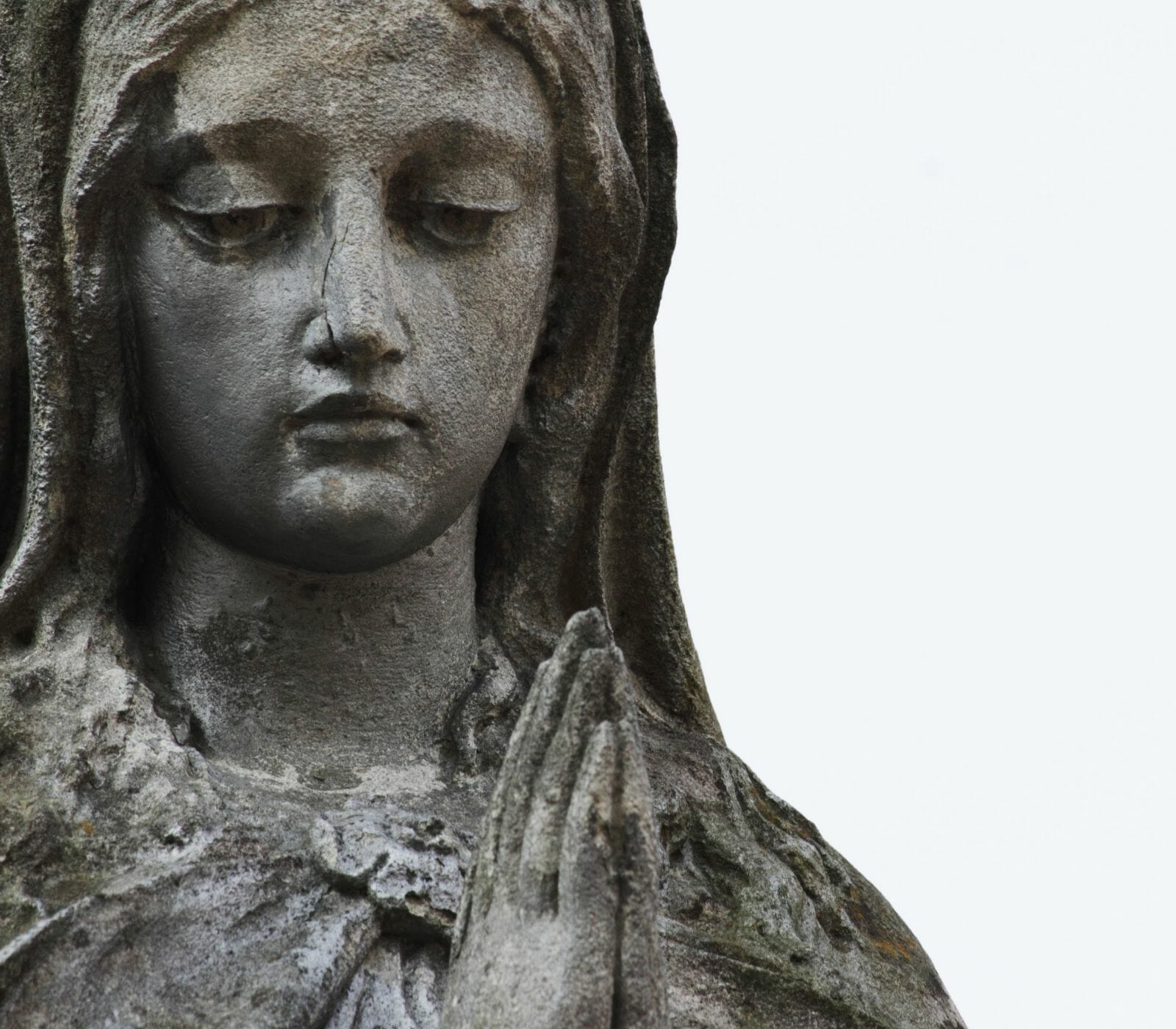Ave Regina Caelorum
Marian Antiphon for the Time After the Feast of the Presentation of the Lord through Lent and on Fridays throughout the year
The antiphon, Ave Regina Caelorum, is sung as the concluding antiphon in The Liturgy of the Hours from the Presentation of the Lord until Holy Thursday and on Fridays throughout the year. It was originally sung for None for the Feast of the Assumption. The author is unknown. The earliest plainchant manuscript stems from the 12th century.
There are slightly variant versions.
Ave, Regina caelorum,
ave, Domina angelorum,
salve, radix, salve, porta,
ex qua mundo lux est orta.
Gaude, Virgo gloriosa,
super omnes speciosa;
vale, o valde decora,
et pro nobis Christum exora.
Hail, Queen of heaven;
Hail, Mistress of the Angels;
Hail, the root of Jesus;
Hail, the gate through which the
Light rose over the earth.
Rejoice, Virgin most renowned
and of unsurpassed beauty.
Most authorities break the antiphon into two rhymed stanzas. It was a processional antiphon, and — despite its use during the solemn season of Lent — it repeatedly greets Mary in words that echo joy and confidence in her intercession. Mary is queen, lady, root, door! These words recall associated biblical allusions used in the ancient Eastern hymn, the Akathistos. She is greeted with words of increasing intensity, words which our English translation does not sufficiently render: ave, salve, gaude, valle. These are forms of greeting, acclamations, that show an increase of intensity and regard in the greeting.
Though there is little literature to be traced regarding the Ave Regina Caelorum in comparison to the other antiphons, what is said of them applies here as well. It was not the intent of the antiphon writers and singers to enhance or musically interpret text significantly from the 9th – 13th centuries. These were religious forms, prayers of the most exalted type, that were to be prayed. From the 15th century on, the Ave Regina Caelorum text lent itself to a greater variety of musical interpretations. In the post-Reformation period, Mary began to be praised more and more as an exalted queen of great beauty and dignity.
Examples of the period are found from the composers: Leonel Power (d. 1445), Guillaume Dufay (d. 1474), Tomas Luis de Victoria (1548-1611), for example. Joseph Haydn (1732-1809) also created a powerful setting for the Ave Regina Caelorum.
Theological Considerations
What is said of Mary is said in relationship to Christ. He is the King. Mary reflects his kingship and by a journey of faith, she may share in his kingship, both its agony on earth as she stands at the foot of the cross and his glory in the eternal kingdom. Her choice to be Christ-centered and God-bearer gives her dignity above the angels. She is of Jesse’s root from whom the Savior will come. Her womb is the gate from whom the true Light, Jesus Christ, was born.
Mary not only bears Christ but she has also been graced by him and because of him, she has been given the fullness of beauty. She is the glorious virgin, loveliest in heaven, “fairest where all are fair.” All are called to be filled with Christ, we among them, Mary preeminently so because of her role in the plan of salvation. It is the Christ-life, his grace, God alone, who is beautiful beyond all measure.
The human person looks at Mary and rejoices with her that he has graced her so wondrously. We ask her to remind her son of our needs and to pray for us to Christ.
The Ave Regina Caelorum Today
Although many musical settings of the Ave Regina Caelorum abound, it is the least known antiphon as a prayer or as a popular hymn. As mentioned above the antiphon is sung in plainchant during the Lenten season. Mary, in all her dignity and loveliness, should walk this way with us. Even in the midst of her deepest sorrow, while she shares the destiny of her son, her dignity and her beauty is not crushed. She accompanies Christ — and us — through the painful periods of life. The antiphon reminds us to pray with Mary to the God of life, our living Redeemer, Jesus Christ. He has won the final victory of life over death. She and we may share this victory.
Follow us On Facebook, Instagram, YouTube, Pinterest





